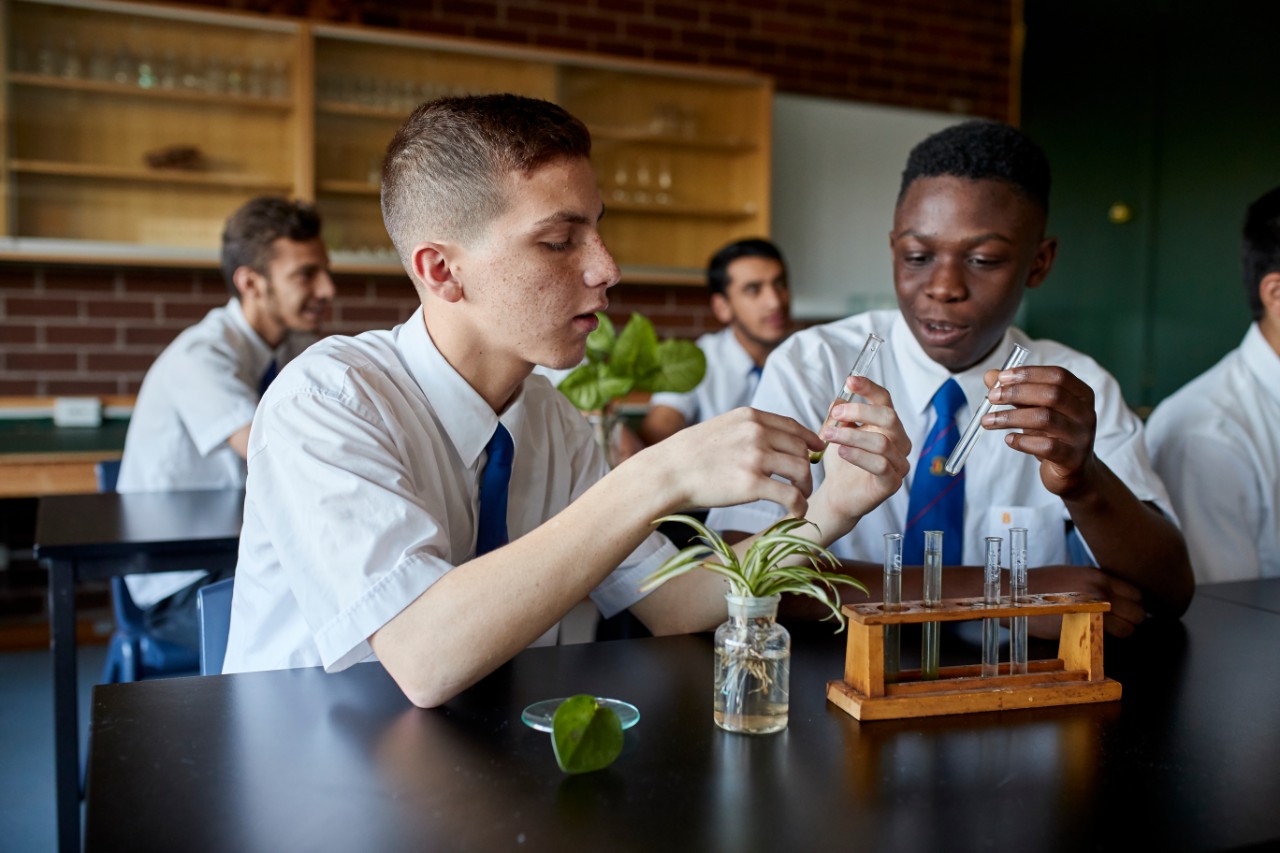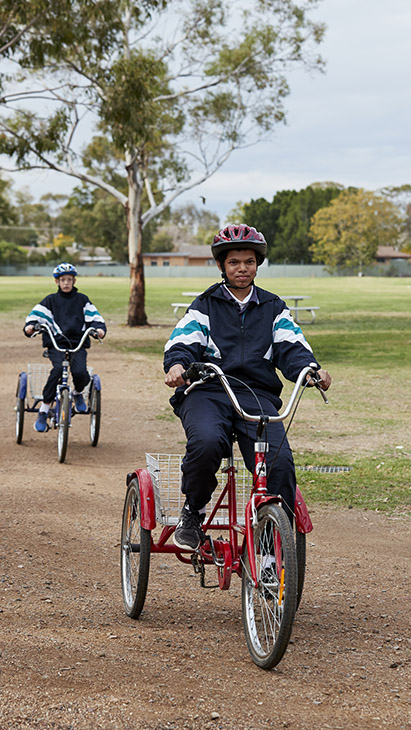Transition to year 11 and 12
Transition into the Higher School Certificate (HSC)
Moving into the final years of high school is an important time in a student’s life. This is a time where decisions about education pathways at school are made in light of a student’s aspirations, personal goals, strengths and abilities. It is also a time when (with positive support and training) students can develop increased independence and autonomy.
For students with disability, the transition process should begin in early high school, to allow time for the student to develop the skills and abilities to support their success in their final years of schooling. This also allows the student and their family time to develop skills and abilities to prepare them for life post-school.
Choosing an education pathway
There are a number of educational pathways available for students. From early high school, the Learning and Support Team can collaborate with a student and other stakeholders to establish the student’s career interests, post-school goals, and personal strengths and abilities.
Part of this process will involve making decisions on the education pathway that will best fit the student’s aspirations, goals, strengths and abilities. There are many educational pathways, and students can achieve their personal goals with the right support and planning.

Education pathways
The Higher School Certificate (HSC), school-based or external Vocational Education and Training (VET), School-Based Apprenticeships and Traineeships (SBAT) are all pathways available to students.
University
If a student plans to attend a university, they may need an Australian Tertiary Admission Rank (ATAR) based on their study scores. If this is the case for the course(s) they are interested in, they will need to complete the Higher School Certificate (HSC).
It is important to note however that in 2016 only 26% of domestic undergraduate students were admitted to courses based on their ATAR*, with other pathways for entry including VET, post-school qualifications, HSC without an ATAR, and the University Admissions Centre (UAC)
Educational Access Scheme.
Vocational Education and Training (VET)
Students can also undertake Vocational Education and Training (VET) as part of their HSC or to receive a nationally recognised training qualification in a specific industry.
Students can also complete a
School Based Apprenticeship and Traineeship, in which they combine part-time training and employment with their HSC.
Accommodations
Students may feel anxious about the upcoming changes, including a student with disability. In particular, many students may worry about whether they can manage schoolwork and homework in high school. Some may be anxious about changes to routines and friendships.
Below are a few strategies for teachers that may help a student with the transition:
Disability provisions
Disability provisions are practical arrangements for students with disability who may not otherwise have equitable access to demonstrating their understanding in assessments. There are opt in or out formal examinations depending on the subject studied and the abilities of the student.
Life skills patterns of study in any subject will not require a formalised external assessment. NSW Education Standards Authority (NESA) has more information on applying for
disability provisions for the HSC.
Specific unit outcomes
If the specific nature of a student’s disability may make completing specific unit outcomes challenging, communicate this clearly to the student and discuss potential supports and adjustments. Involve parents or carers in these discussions.
Undertake HSC over several years
Students may be able to undertake HSC over several years to enable successful completion of their studies. The Pathways pattern of study should be discussed with the school, parent or carer and student.
Assistive technology
The use of assistive technology for enhancing the learning process is encouraged, however it is important that new or emerging assistive technology is discussed with
NSW Education Standards Authority (NESA) regarding use within school-based assessments and HSC external assessments.

Alternative or additional programs
Life skills pattern of study
In some cases a student may experience more success in a life skills pattern of study. This provides the student with opportunities to continue to engage with their peers in class, while learning key life, social or workplace skills.
Schools would provide individual reports on the student’s achievements as an ATAR will not be provided.
School Excellence Framework alignment
Wellbeing
Australian Professional Standards for Teachers alignment
Standard 1: Know students and how they learn
Audience
Secondary teachers
Purpose
This resources features strategies, resources and considerations for supporting students transitioning to year 11 and 12.
Reviewed
November 2021. Share your feedback here